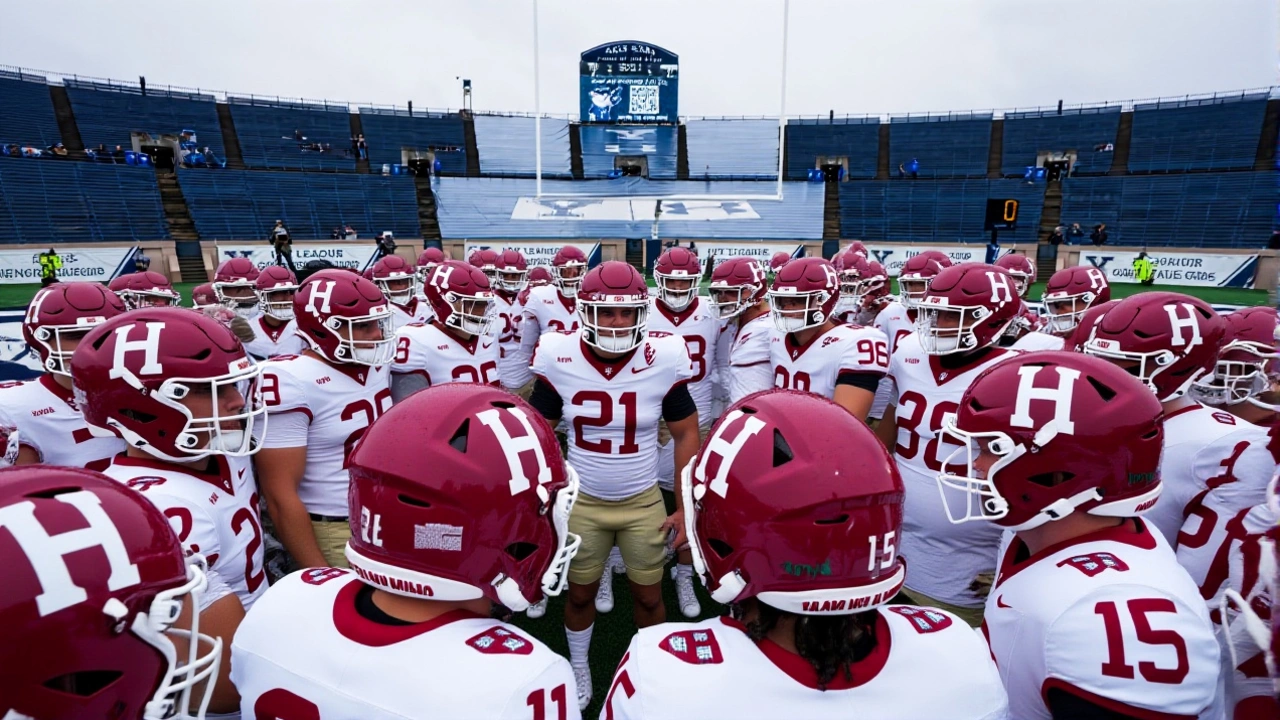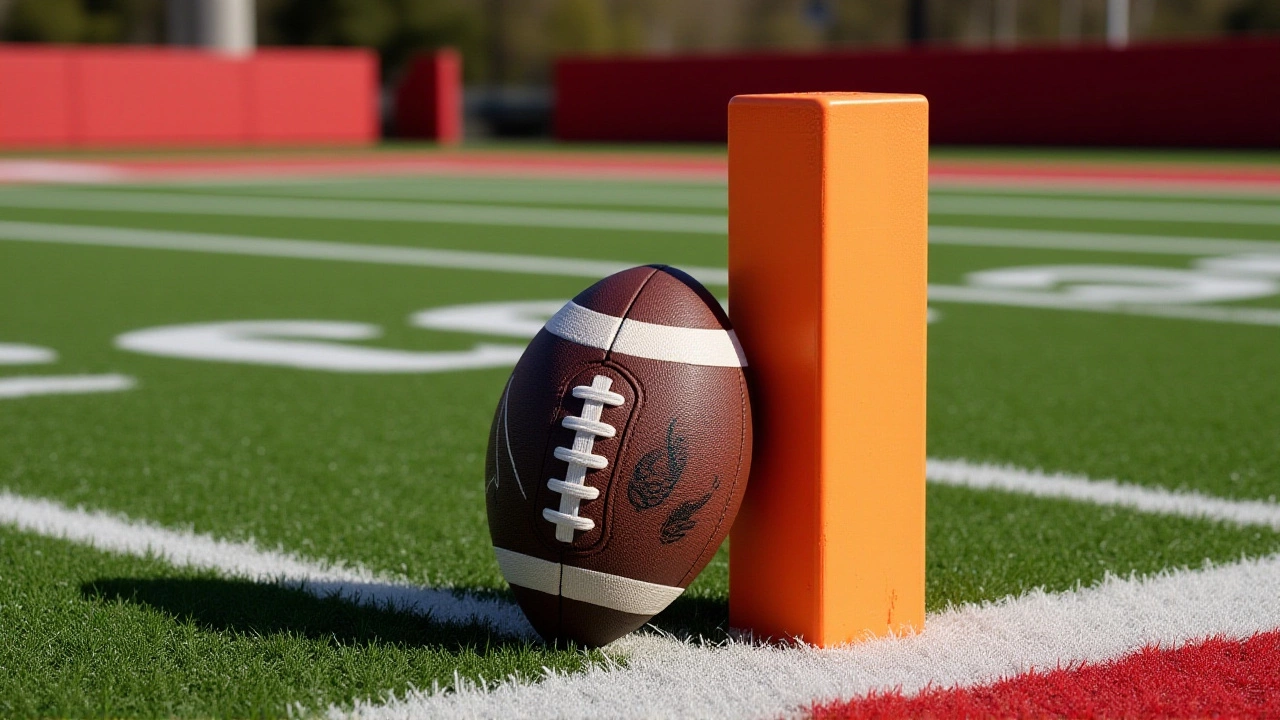When the final whistle blew at the Yale Bowl on November 22, 2025, the scoreboard read Yale 45, Harvard 28 — a result that flipped the script on weeks of academic bragging rights and sent shockwaves through one of college football’s most storied rivalries. Just one day earlier, The Harvard Crimson had published its satirical yet startlingly detailed comparison, "Harvard vs. Yale: By the Numbers," declaring Harvard the clear victor across five metrics: U.S. presidents (5 to 3), Nobel laureates (121 to 48), library volumes (20 million to 15 million), and even the elevation of mountains named after them. Only one category favored Yale: laundry perpetrators (1 to 0). "The numbers have spoken," the paper declared. But on the gridiron, numbers don’t always tell the whole story.
The Game That Broke the Streak
The 141st edition of "The Game" drew 52,497 fans to New Haven, Connecticut — the largest crowd since 2019 — and delivered a performance that rewrote the script. Yale, entering the contest at 7-2 and ranked No. 25 in the FCS Coaches Poll, didn’t just beat Harvard; they dismantled a nine-game winning streak that had made the Crimson the envy of the Ivy League. Harvard, undefeated at 9-1 and ranked No. 10, entered as the favorite — but Yale’s offense, led by quarterback Tyler Chen (3 TDs, 287 yards), carved through Harvard’s defense like it was paper. Linebacker Sean Line of Harvard racked up a career-high 15 tackles, his fifth 10-tackle game of the season, while teammate Ty Bartrum added 14 for the second straight game. Still, it wasn’t enough. Yale’s defense forced three turnovers, including a pivotal interception returned 42 yards for a touchdown in the third quarter that broke a 28-28 tie.
Academic Superiority vs. Gridiron Reality
On paper, Harvard still holds the edge. Its Harvard University boasts 121 Nobel laureates — more than any other university in the world — compared to Yale’s 48. Its library system, the oldest in the U.S., holds 20 million volumes. Five U.S. presidents graduated from Harvard; three from Yale. Even the mountain named after Harvard in Colorado stands 219 feet higher than Mount Yale. But the cost of that prestige? For the 2025–2026 academic year, Harvard’s tuition was $59,320 — while Yale’s was $69,900, a $10,580 gap that reflects years of aggressive financial aid expansion at Yale. The university offers 80 undergraduate majors; Harvard, 50 concentrations. And yet, Harvard’s acceptance rate for the Class of 2028 was 3.6%, slightly lower than Yale’s 3.7% — a trend that’s held for four straight years, with both schools hovering stubbornly under 4%.
A Rivalry That Outlived Empires
"The Game" — the second-oldest continuing rivalry in college football — dates back to 1875. Yale leads the all-time series 72–61–8. But this year carried historic weight: for the first time ever, the Ivy League champion would qualify for the FCS playoffs. Harvard, despite sharing the title with Yale at 6–1 in conference play, was the only team with an undefeated non-conference record. Yale had lost twice outside the Ivy League — to FCS powerhouse North Dakota State and to Appalachian State — yet still earned a share of the crown. That’s because the Ivy League doesn’t hold a conference championship game. The NCAA’s selection committee now had to choose between two teams with identical records. Harvard’s 9–1 overall record gave them a slight edge in the eyes of analysts — but Yale’s win in the head-to-head matchup gave them a moral claim. The decision would come Sunday at noon ET on ESPNU.

Why This Matters Beyond the Scoreboard
This isn’t just about football. It’s about identity. For decades, Harvard and Yale have been locked in a quiet battle for cultural dominance — not just academically, but symbolically. Harvard’s alumni network dominates Wall Street and Silicon Valley. Yale’s produces more Pulitzer winners and Supreme Court justices per capita. The "numbers" in the Flyby article were meant to be tongue-in-cheek — but they revealed a deeper truth: Harvard’s brand is built on scale, output, and global influence. Yale’s is built on intimacy, tradition, and an almost stubborn refusal to be outdone.
And then there’s the laundry perpetrator. Yes, Yale had one. Harvard had none. The Crimson’s tongue-in-cheek admission — "they can have this one" — might’ve been the most honest line of the entire piece. Because in a rivalry this old, in a competition this fierce, sometimes the only thing that truly matters is who wins on the field. And this year, Yale did.
What Comes Next?
Harvard now waits. The NCAA FCS Playoffs selection show is scheduled for Sunday, November 23, 2025, at noon ET on ESPNU. If Harvard is left out — despite its 9–1 record and No. 10 ranking — it will mark the first time since 2015 that an Ivy League team with a winning record missed the playoffs. Yale, meanwhile, is already eliminated — their two non-conference losses disqualify them under current FCS criteria. But they’ve done something no one expected: they’ve proven that in the most storied rivalry in college football, the numbers don’t always win. Sometimes, grit does.
Frequently Asked Questions
Why did Yale get the Ivy League title despite having two non-conference losses?
The Ivy League doesn’t use a tiebreaker system based on non-conference records. The champion is determined solely by conference win-loss record. Both Harvard and Yale finished 6–1 in the Ivy League, so they shared the title. The NCAA’s FCS selection committee then considers overall record, strength of schedule, and head-to-head results — which is why Harvard’s 9–1 record gave them a stronger playoff case than Yale’s 8–2.
How does the 2025 'The Game' compare to past matchups?
The 2025 game was the highest-scoring in the series since 2007, when Yale won 48–35. It was also the first time since 1998 that the winner came from behind after trailing at halftime. Historically, Yale has won more games (72), but Harvard has dominated the last decade, winning nine straight before this loss. The 52,497 attendance was the largest since 2019 and the third-highest in the rivalry’s 141-year history.
What’s the significance of the laundry perpetrator statistic?
It’s a satirical jab by The Harvard Crimson’s Flyby section — a student-run humor column — poking fun at the obsession with quantifying everything. The "laundry perpetrator" refers to a student who allegedly left a single sock behind in the dorm laundry room. Harvard claimed zero such incidents; Yale admitted to one. The joke underscores how absurdly intense the rivalry is — even minor, trivial details become battlegrounds.
Why is Yale’s tuition higher than Harvard’s?
Yale’s higher sticker price reflects its larger endowment and more aggressive financial aid policy. While Yale’s tuition is $69,900, the average net price after aid is actually lower than Harvard’s — around $17,000 compared to Harvard’s $19,000. Yale has committed to meeting 100% of demonstrated need without loans, while Harvard offers a similar policy but with slightly less generous aid packages for middle-income families. The higher tuition number is partly a branding choice — and a way to fund expanded programs in the arts and humanities.
Could Harvard still make the FCS playoffs despite sharing the Ivy title?
Yes — and they’re the strong favorite. With a 9–1 overall record, a top-10 national ranking, and a win over a top-25 team (Yale), Harvard has the resume of a typical at-large playoff team. The Ivy League has never had a team make the playoffs without winning the title outright — but this year’s rule change allows the champion to qualify, and Harvard’s non-conference wins against FCS opponents give them the edge over Yale’s losses to stronger teams. Most analysts expect Harvard to be the 10th seed.
How do the Nobel laureate numbers compare to other universities?
Harvard’s 121 Nobel laureates rank first globally, ahead of Cambridge (120) and Stanford (84). Yale’s 48 place it 11th worldwide — behind institutions like MIT, Caltech, and Columbia. But the gap is misleading: Yale’s smaller undergraduate population means it produces Nobel laureates at a higher per-capita rate than Harvard. In fact, Yale graduates win Nobels at nearly twice the rate per 10,000 alumni compared to Harvard — a testament to its focused, research-intensive liberal arts model.
